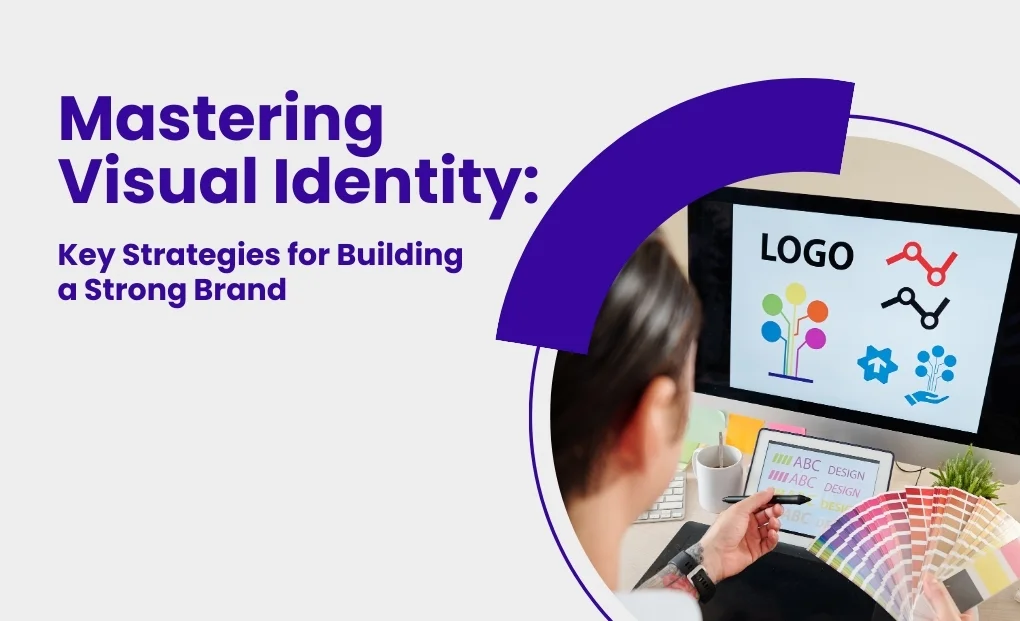Any company aiming for long-term success must first learn the craft of brand creation. Apart from differentiating yourself from the competitors, a good brand promotes client loyalty and stimulates development. This article will go over seven critical phases in the brand creation process, offering practical ideas and techniques to enable you to produce a brand your audience will find appealing. Whether your logo designing company is new or old, these marketing brand creation techniques will be beneficial in determining the character of your brand and guaranteeing its ongoing influence.
Visual Identity
Visual identity often culminates in creating a brand style guide, which offers clear directions on how the brand should always be visually portrayed in any context. Visual identity evokes strong emotions in viewers, thus guiding them about the kind of brand and products/services provided to unite the many facets of a company using consistent graphics.

Visual Identification Against Brand Identification
Brand Identity And Visual Identity Are Naturally Linked
On the one hand, brand identity is an expression of everything that defines the brand. It covers non-visual components such as brand voice, copy editing rules, a goal statement, fundamental values, etc., and visual identification.
Simultaneously, visual identity is a separate field with an individual strategy and mental process from brand identity. Though there is overlap, most frequently, separate professions are engaged in each. Marketers control brand identity; designers and creative directors control visual identity.
According to the author, visual identity shows who a business is on the outside; brand identity explains who a brand is on the inside.
The Components Of Visual Identity
Visual identity is the visual language of a brand. Its separate components, such as words, are the building blocks enabling the messenger to establish meaning. Here, we will examine the components used together to create a coherent visual identity.
Illustration
In visual identity, graphics are created or produced as image assets. They may be as simple as forms and shapes; take a Lego block or a Coca-Cola bottle and see how these unique silhouettes represent their businesses. Alternatively, they could be more complicated, including a logo, icons, and even full-scale images or animations.
Colour Pallet
Through a system of highly particular colours, shades and tints, colour is utilised to identify a brand (no more than three colours are usually advised). This implies companies use shiraz and seafoam instead of just red or green. Colours utilised properly may produce some of the most vital emotional reactions in the observer.
Imagery refers to photography, video material, and any spokespeople serving as the brand’s live “image” in commercials. Regarding visual identity, designers must choose only those pictures that most closely reflect the company’s personality and its consumers. Because consumers attach to faces and naturally want to see themselves mirrored in the brands they use, brand imagery is the aspect most connected to the target audience.
Depending on who your graphics are supposed to be addressing, this entails, for instance, establishing rules for whether any stock photographs or films utilised should reflect corporate or regular people.
Physical Brand Qualities
Physical assets are the tangible items that support a brand’s visual identity. Strictly speaking, this could only apply to brands with a physical presence; the form of these assets would differ even within existing companies. Still, it’s worth looking at; as for physical businesses, visual identity is a fundamental component.

Gain More Understanding about Branding
Describe Your Brand Identity
The core of what your brand represents is brand identity. It determines how clients see and engage with your company. Since all brand-building techniques in marketing are based on your brand identity, defining them is vital.
Your purpose, vision, values, and personality define your brand identity in the most critical sense. Your vision describes your long-term objectives; your mission identifies your present direction. Values are the ideas that direct your behaviour; your personality captures the tone and style of your brand message.
Clarifying your vision and goal can help you define and express your brand identification. Make sure they speak to your target market and complement your company objectives. List your basic principles and how they affect the conduct of your brand. At last, create a unique brand identity that sets you apart from rivals. This will make the brand image coherent and appealing throughout the brand creation process.
Know Your Target Readership
Building a brand depends critically on knowing your target audience. Successful brand creation techniques in marketing are based on this information, like a rock. First, look at your audience. Get direct comments and insights from potential consumers by use of surveys. Another great tool is social media channels, which provide much information about user interests and actions. Examining this information lets you spot preferences and patterns.
Conclusion
Ensure that your logo, colour palette, and typeface are consistent across all touch points—including your website, social media, and marketing materials—to preserve continuity in your brand’s visual character. Create brand standards, including these graphic components, and make sure every logo designing company team member and partner follows them. Review and update your materials often to reflect changes in your brand strategy.
